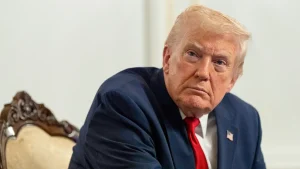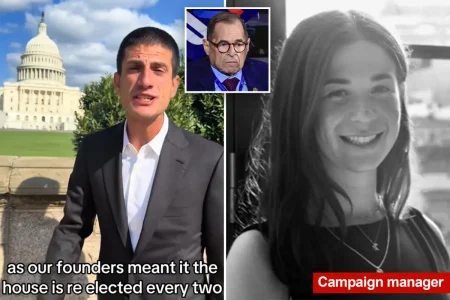Trump’s Foreign Policy: The Pragmatic Art of Leader-to-Leader Diplomacy
In the complex theater of global politics, former President Donald Trump has consistently demonstrated one inconsistency—his preference for personal relationships over policy doctrine. While traditional diplomatic frameworks emphasize institutional continuity and predictable engagement, Trump’s approach has rewritten these conventions, placing unprecedented emphasis on direct leader-to-leader interactions. This distinct diplomatic style, both praised for its boldness and criticized for its unpredictability, represents a fundamental shift in how America conducts its foreign affairs. As international relations experts continue to analyze the implications of this personalized approach, a deeper examination reveals both the strategic calculations and inherent risks in diplomacy that prioritizes personality over policy.
The Personalization of American Foreign Policy
Donald Trump arrived in Washington as the ultimate political outsider, bringing with him a business negotiator’s mindset that immediately collided with the State Department’s carefully calibrated diplomatic traditions. “I know the best people,” Trump frequently asserted during his campaign, foreshadowing an approach that would elevate his personal judgment above institutional wisdom. This philosophy manifested in high-profile summits with North Korea’s Kim Jong Un, direct negotiations with China’s Xi Jinping, and unexpected rapport with Russia’s Vladimir Putin—encounters that often left career diplomats scrambling to adjust policy frameworks around presidential handshakes. “Foreign policy is about relationships between leaders,” observed Richard Haass, president of the Council on Foreign Relations, “but Trump took this to unprecedented levels, sometimes appearing to value personal chemistry over national security calculations.” This personalization extended beyond mere style—it fundamentally altered how American interests were defined and pursued on the global stage, creating diplomatic openings where traditional channels had failed while simultaneously introducing volatility into longstanding alliances.
Breaking Diplomatic Norms: Risk and Reward
The Trump doctrine—if one could call it that—embodied calculated unpredictability. Traditional diplomatic playbooks were frequently discarded in favor of direct leader engagement, sometimes announced via early-morning tweets that caught even senior administration officials off guard. This approach yielded notable breakthroughs, including the Abraham Accords normalizing relations between Israel and several Arab nations—an achievement that surprised veteran Middle East negotiators who had long insisted on resolving the Palestinian question first. “Sometimes you need to shatter conventional wisdom to make progress,” explained a former Trump administration national security official speaking on condition of anonymity. “The President understood that leader-to-leader dynamics could bypass entrenched bureaucratic obstacles.” However, this same personalized approach created significant challenges within NATO, where allies accustomed to America’s unwavering support suddenly found themselves navigating Trump’s transactional view of international commitments. German Chancellor Angela Merkel notably remarked that Europe “must take our fate into our own hands,” signaling how Trump’s leader-focused diplomacy had disrupted decades of alliance management. The diplomatic establishment’s resistance to this approach underscored the tension between institutional stability and presidential autonomy in foreign affairs.
The Psychology Behind Trump’s Diplomatic Engagements
At the core of Trump’s diplomatic methodology lies a deeply held belief in his ability to read and influence other leaders—a confidence cultivated during decades of high-stakes business negotiations. “I understand people better than anybody,” Trump once claimed, reflecting this self-assessment. Psychological profiles of his diplomatic style reveal a consistent pattern: initial warmth and flattery followed by direct, sometimes confrontational negotiating tactics. With North Korea’s Kim Jong Un, Trump swung dramatically from threatening “fire and fury” to exchanging what he called “beautiful letters,” demonstrating his willingness to rapidly recalibrate relationships based on personal interactions rather than policy positions. Dr. Elizabeth Saunders, Professor of International Relations at Georgetown University, notes that “Trump’s approach reflects a fundamental belief that international relations ultimately come down to personal chemistry between leaders—a view that challenges institutional perspectives but resonates with significant portions of the American public who see value in direct, unfiltered engagement.” This psychological dimension extends to Trump’s assessment of adversaries and allies alike, with his well-documented tendency to categorize world leaders based on personal rapport rather than alignment with American strategic interests. The former president’s defenders argue this human-centered approach cut through diplomatic pretense, while critics contend it subordinated national security to personal dynamics.
Global Reactions: Adaptation and Resistance
World leaders quickly recognized that engaging with Trump required strategies fundamentally different from those employed with previous American presidents. Japanese Prime Minister Shinzo Abe pioneered what diplomatic observers called the “Trump Whisperer” approach—combining personal flattery, golf diplomacy, and strategic business announcements to maintain influence with the relationship-focused president. French President Emmanuel Macron similarly attempted to leverage personal chemistry, hosting Trump for a spectacular Bastille Day celebration before discovering the limitations of charm when confronting substantive policy differences. “Different leaders developed different approaches to managing Trump,” explains Dr. Thomas Wright, senior fellow at the Brookings Institution. “Some sought to cultivate personal relationships, others worked through alternative channels in the administration, while certain nations simply waited for what they hoped would be a return to more conventional American diplomacy.” China’s Xi Jinping initially appeared to establish effective personal channels with Trump, only to see the relationship deteriorate as trade tensions escalated despite their proclaimed friendship. This varied international response underscores how Trump’s leader-centric approach required global adaptation, creating what some analysts describe as a temporary dual-track system of engagement with America—one through traditional diplomatic channels and another through direct appeals to presidential sentiment.
The Legacy and Future of Personalized Diplomacy
As historians and policy experts begin assessing Trump’s diplomatic legacy, questions emerge about the durability of his personalized approach and its lasting impact on American foreign policy institutions. The most visible outcomes—from the Abraham Accords to redefined trade relationships—suggest that bypassing diplomatic orthodoxy can sometimes yield breakthrough results. “Trump demonstrated that personality-driven diplomacy can create openings where traditional approaches have failed,” notes Ambassador Dennis Ross, veteran diplomatic envoy across multiple administrations. “But the question remains whether these openings lead to sustainable policies without institutional follow-through.” The State Department, traditionally America’s diplomatic backbone, experienced significant departures and diminished influence during the Trump years, raising concerns about long-term capability erosion. Current Secretary of State Antony Blinken has emphasized rebuilding these institutional capacities while acknowledging that certain elements of direct engagement may remain valuable tools. Perhaps most significantly, Trump’s approach fundamentally challenged assumptions about foreign policy consistency. While previous administrations prized predictability as essential to American credibility, Trump embraced strategic ambiguity and relationship recalibration as negotiating advantages. This tension between institutional consistency and leader-driven flexibility continues to shape America’s international engagement, with neither approach likely to entirely displace the other in future administrations.
America’s Diplomatic Future: Balancing Personality and Process
The enduring question emerging from Trump’s diplomatic revolution is not whether personal relationships matter in international affairs—they unquestionably do—but rather how to balance these leader-level dynamics with institutional continuity and strategic coherence. “Every president brings personal style to diplomacy,” explains Dr. Richard Fontaine, CEO of the Center for a New American Security, “but the Trump administration represented an extreme pendulum swing toward personalization that future presidents will likely moderate.” This recalibration appears already underway, with the Biden administration emphasizing “foreign policy for the middle class” while simultaneously restoring traditional diplomatic frameworks. Public opinion research suggests Americans remain divided on Trump’s approach, with supporters praising his willingness to directly engage adversaries and critics highlighting the unpredictability that sometimes undermined long-term strategic positioning. As technology continues transforming how leaders communicate and global challenges increasingly require coordinated responses, America’s diplomatic future likely involves integrating aspects of Trump’s direct engagement approach with renewed institutional capabilities. “The most effective foreign policy,” concludes former Secretary of Defense Robert Gates, “combines strong leader relationships with robust institutional processes—neither works optimally in isolation.” For a nation whose global influence depends on both power and persuasion, finding this balance represents perhaps the most significant diplomatic challenge of the coming decade.











